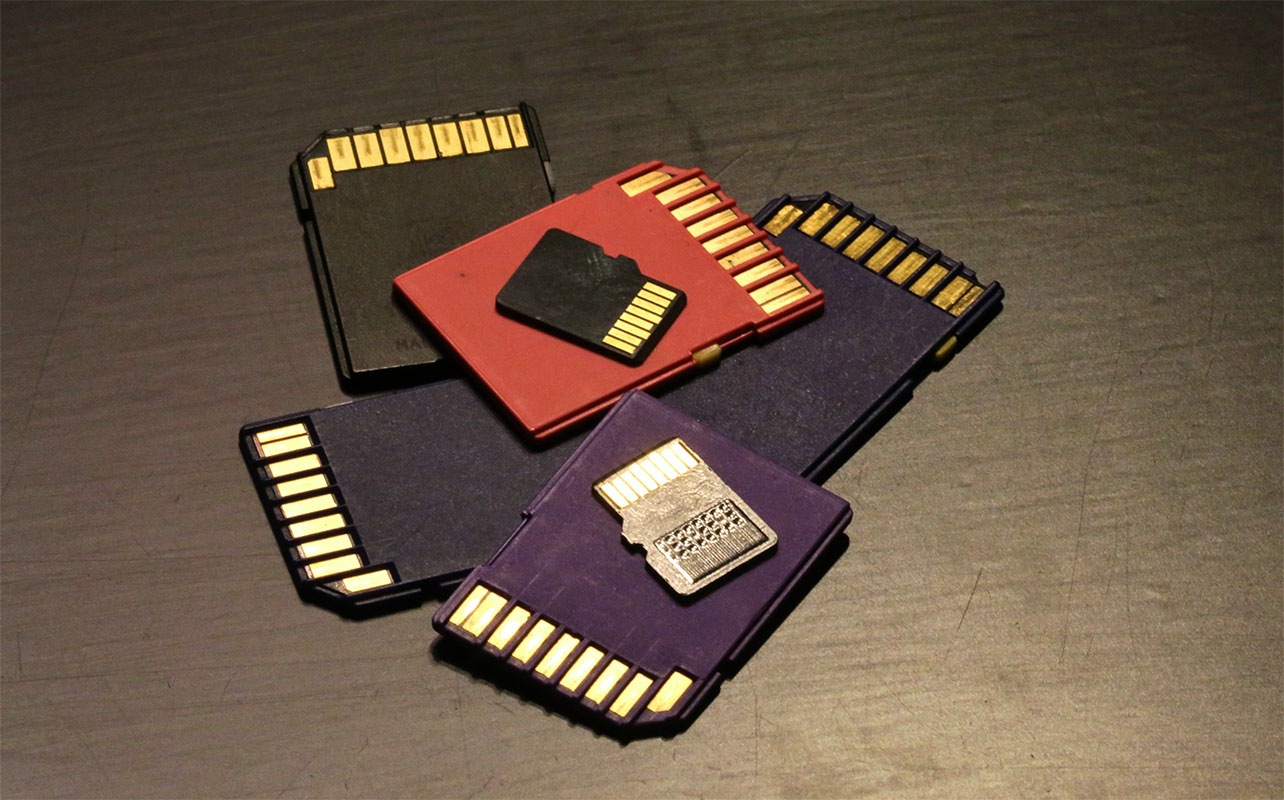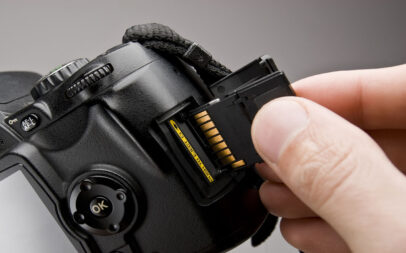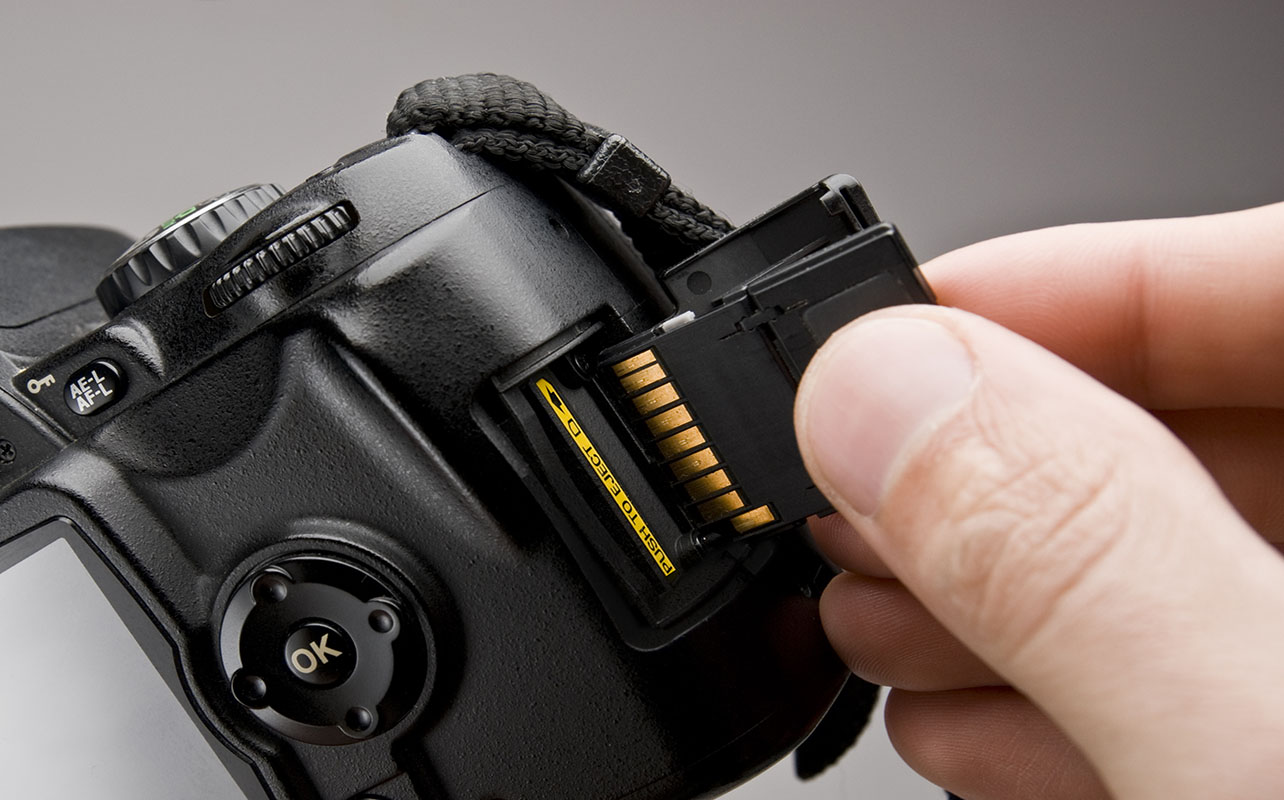
Even in an era dominated by cloud storage and high-capacity internal drives, memory cards are still the go-to for quick, portable, and flexible storage. Whether you’re capturing high-res photos with a DSLR, filming drone footage, or expanding your smartphone’s storage, these tiny devices play a big part in our digital lives. But when it comes to choosing one, there’s a common question: SD card or microSD card? The answer really depends on your device and how you plan to use it—picking the wrong card can lead to compatibility issues or faulty performance.
In this guide, we’ll walk you through key things to consider when choosing between SD and microSD cards—covering size, compatibility, performance, and when to use each—so you can confidently make the right choice.
What are SD and microSD cards?
SD card overview
SD (Secure Digital) cards have been around since 1999 and are the full-sized memory cards you’ll often see in things like DSLR cameras and printers. They’re known for their durability and broad compatibility with both professional and consumer-grade equipment. Measuring 32mm x 24mm x 2.1mm, these data cards are a bit too big and bulky for compact gadgets, but well-suited for devices where space isn’t a constraint. SD cards come in different formats—SDHC, SDXC, and SDUC (not yet commercially available)—with storage capacities ranging from 2GB all the way up to a massive 2TB (and 128TB with SDUC).

Not sure which storage standard is right for you?
This guide explains the key differences between SD, SDHC, and SDXC cards to help you select the best fit. See which one is right for your gear and needs!
microSD card overview
microSD cards are essentially miniature versions of standard SD cards. At just 15mm x 11mm x 1mm, they are specifically designed for smaller, more portable tech like drones and handheld phones (check your model’s specs). Despite their tiny size, microSD cards meet the same capacity and performance standards as their full-sized counterparts. You’ll find them in formats like microSDHC (up to 32GB), microSDXC (up to 2TB), and the newer microSDUC (over 2TB)—offering generous storage in a very small package. Plus, with the help of an adapter, you can pop them into devices that use standard SD card slots, making them incredibly versatile. This compact format has become the go-to choice for devices where physical space and portability matter most.
What to consider when choosing between SD and microSD cards
Physical size and design

The most noticeable difference between the two formats is size. Standard SD cards are larger—about the size of a postage stamp—which makes them easier to handle, insert, and remove from devices. This extra surface area also makes them a bit more durable and ideal for gadgets that can accommodate their size, such as DSLR cameras, Blu-ray players, security cameras, or laptops with built-in SD slots. The larger form factor also means they’re less likely to be misplaced and can withstand more frequent handling—perfect for photographers or videographers who often swap cards in and out.
On the other hand, microSD cards are tiny—roughly the size of a fingernail. Their compact form factor is designed for devices where space is limited, such as many smartphones, point-and-shoot cameras, and go-pros. While this makes them great for compact tech, they’re also easier to lose or misplace. Still, their size makes them more portable and adaptable, especially when paired with an SD adapter.
Device compatibility
When comparing micro sd vs sd, compatibility becomes a key factor. SD cards are primarily used in larger electronics that have room for full-size slots—such as some home theatre devices. If your device only has an SD slot, you’ll need a full-size SD card or a microSD card with an adapter.
microSD cards are far more versatile. Not only are they compatible with smaller devices, but with an adapter, they can also be used in devices that require standard SD cards. This flexibility makes microSD the better choice for users who switch between different devices frequently. Just keep in mind that the reverse isn’t true: a standard SD card won’t fit into a microSD slot.
Storage capacity and formats
Both SD and microSD cards follow the same format standards and classifications, which are based on capacity:
| Format | Capacity range |
|---|---|
| SD / microSD | Up to 2 GB |
| SDHC / microSDHC | More than 2 GB to 32 GB |
| SDXC / microSDXC | More than 32 GB to 2 TB |
| SDUC / microSDUC (not yet commercially available) | More than 2 TB to 128 TB |
Although both card types can support these standards, your device might not. Older devices may only support SDHC cards, while newer models are designed to handle SDXC or even SDUC. Always check your device’s user manual or specifications before purchasing a high-capacity card.
Speed classes and performance
Performance isn’t determined by whether you choose SD or microSD—it comes down to speed class. Both card types share the same speed rating systems, which affect how quickly they can read and write data. This is especially important for users capturing high-resolution video, shooting burst photos, or transferring large files.
Here’s a quick breakdown of the major speed classifications:
- Speed Class (C2 to C10): Minimum write speeds, where Class 10 equals at least 10MB/s.
- UHS (Ultra High Speed): U1 means 10MB/s; U3 means 30MB/s—perfect for 4K video.
- Video Speed Class (V6 to V90): Designed for video recording. V30 supports 4K; V90 supports 8K.
| Speed class | Minimum write speed | Ideal use case |
| C10 | 10 MB/s | Basic HD video and general storage |
| U1 | 10 MB/s | Full HD video |
| U3 | 30 MB/s | 4K video and burst photo capture |
| V30 | 30 MB/s | 4K video and time-lapse |
| V90 | 90 MB/s | 8K video and pro-level recording |
Some professional gear may benefit from full-size SD cards with enhanced heat dissipation or support for SD Express, but for most users, microSD cards perform just as well—especially when paired with reliable hardware. Ultimately, your speed needs should align with your use case and device requirements.
Choosing the right card for your needs
Decision factors
Choosing between microSD vs SD boils down to three main factors:
- Device compatibility: What device are you using? Some gadgets only take SD cards, others only microSD, and some work with both. So, first check what your device supports.
- Physical size constraints: If you have a phone, drone, or action camera, you’ll probably need a microSD because they’re tiny. For bigger gear like DSLRs or printers, SD cards are usually the way to go.
- Use case and flexibility: How do you plan to use it? A microSD card allows you to move it easily between devices with different slots using an adapter. For professional equipment, SD cards might offer better durability and handling.
Avoiding common mistakes
- Overestimating storage: Don’t overspend on massive storage if you only shoot occasionally.
- Counterfeit cards: Fake memory cards are common. Buy only from reputable brands and retailers.
- Ignoring device specs: Some older devices don’t support SDXC or UHS-II cards. Always check compatibility first.
Final verdict: SD or microSD?
So, which one wins in the SD card vs microSD card showdown? If you’re using a camera, laptop, or printer with a full-size card slot, an SD card is your best bet. They’re easy to handle and widely supported. If you’re storing data in a smartphone or drone, go with a microSD card. It’s compact, equally powerful, and can double as an SD card when paired with an adapter.
Ultimately, both card types can offer the same speed and capacity—the difference lies in size, flexibility, and compatibility. By understanding your device’s needs and your usage habits, you can confidently choose the card that suits you best.
Still need help choosing? Browse SD and microSD cards at Best Buy Canada to find the perfect match for your gear.
Frequently asked questions (FAQ)
Are SD cards faster than microSD cards?
Not necessarily. Both SD and microSD cards follow the same speed classes and performance ratings. A high-end microSD card, especially one with a UHS-II or V90 rating, can outperform a basic SD card. Speed depends more on the specific card’s technology than on its physical size.
What’s the best SD card for photography?
If you’re shooting high-resolution images, especially in RAW format or burst mode, you’ll want a card with a fast write speed. Look for SD cards with U3 or V30 ratings or higher. These ensure smooth data capture and reduce lag when saving multiple high-res images quickly.
This article was drafted using AI technology and then reviewed, fact-checked, and revised by a member of our editorial team.






Excellent breakdown of SD Card vs. Micro SD Card — the way you explain form factor, compatibility, and speed considerations is super clear.
At Photo Background Remove
, we frequently work with product images coming from devices using both types of cards — understanding their differences ensures we get the best raw files for retouching. Thanks for the helpful guide!